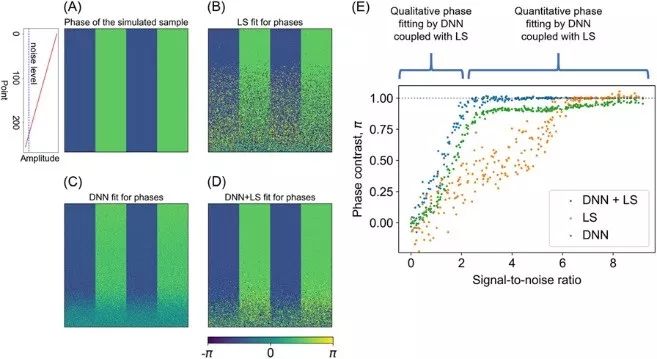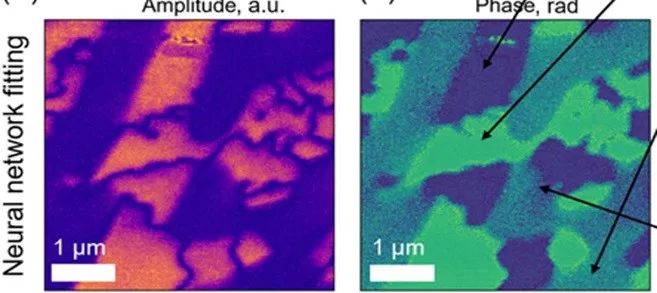npj: 电镜中的垃圾变黄金—深度神经网络
海归学者发起的公益学术平台
分享信息,整合资源
交流学术,偶尔风月
近十年来,扫描探针、电子显微镜和光学显微镜的光谱成像方法发展迅速,导致了大型多维数据集的兴起。在许多情况下,将高光谱数据降维到较低维度的材料特征参数,要依赖功能拟合,虽然拟合函数的近似形式是已知的,但函数的参数却是需要人为确定的。然而,通过迭代方法实现噪声数据的功能拟合(如最小二乘梯度下降),常常会出现虚假结果。
来自美国橡树林国家实验室的Stephen Jesse领导的团队,提出了一种新的方法,可用来逆向解决问题,可从基于光谱成像数据的最小二乘拟合中提取物理模型参数,并能通过深度学习测定先验参数而增强提取能力。他们将这种方法应用于从压电响应力显微镜数据中提取简谐振子参数,并证明了通过结合使用深度神经网络和最小二乘拟合,可以探测比传统方法低一个数量级的信号响应,接近激发信号的热限制。作为模型系统,他们演示了从层状铁电化合物的带激发压电响应力显微镜成像中,提取阻尼简谐振子参数。这种使用深度神经网络的方法是通用的,并且在正向和反向情况下都显示出它们作为函数近似器的效用,且它们在嘈杂的环境中工作良好。
该文近期发表于npj Computational Materials 5: 25 (2019),英文标题与摘要如下,点击左下角“阅读原文”可以自由获取论文PDF。
Deep neural networks for understanding noisy data applied to physical property extraction in scanning probe microscopy
Nikolay Borodinov, Sabine Neumayer, Sergei V. Kalinin, Olga S. Ovchinnikova, Rama K. Vasudevan & Stephen Jesse
The rapid development of spectral-imaging methods in scanning probe, electron, and optical microscopy in the last decade have given rise for large multidimensional datasets. In many cases, the reduction of hyperspectral data to the lower-dimension materials-specific parameters is based on functional fitting, where an approximate form of the fitting function is known, but the parameters of the function need to be determined. However, functional fits of noisy data realized via iterative methods, such as least-square gradient descent, often yield spurious results and are very sensitive to initial guesses. Here, we demonstrate an approach for the reduction of the hyperspectral data using a deep neural network approach. A combined deep neural network/least-square approach is shown to improve the effective signal-to-noise ratio of band-excitation piezoresponse force microscopy by more than an order of magnitude, allowing characterization when very small driving signals are used or when a material’s response is weak.
扩展阅读
本文系网易新闻·网易号“各有态度”特色内容
媒体转载联系授权请看下方









